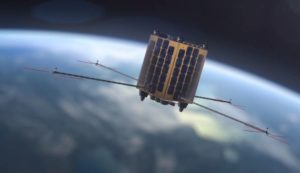
Euroconsult, a leading satellite advisory and consulting firm, has released its latest Small Satellite report and predicts that over the next ten years up to 7,000 small satellites will be built and launched globally.
The report, titled “Prospects for the Small Satellite Market,” predicts that a significant expansion is underway in the small satellite market, both in terms of demand and systems’ capabilities. The predicted launch of about 7,000 small satellites over the next ten years represents a six-fold increase from the 1,200 units launched over the past decade. About 50 constellations, two of which are mega constellations, account for over 80% of the small satellite count.
“By 2022, an average of 580 smallsats will be launched every year as a result of initial constellation deployment. This compares to an annual average of 190 satellites launched over the past five years. The average will then jump to 850 satellites per year on subsequent years up to 2027 because of the deployment of one mega constellation,” said Maxime Puteaux, Senior Consultant at Euroconsult and editor of the report. “Smallsat demand for constellations is cyclical as it is driven by deployment in batches whereas demand for single satellite missions is more stable. Performance improvements and continuous miniaturization reshape the smallsat market as customers have the choice between lighter satellites with the same capabilities or larger but more capable satellites. In the heaviest mass category, smallsats are now able to perform missions that were only achievable in the past by satellites heavier than 500 kg.”
Small satellites have multiple applications. Previously, “technology development” was the dominant application. In the future, this report predicts that three applications will dominate the small satellite market. Broadband communication is predicted to be the largest application by far, with close to 3,500 satellites expected from 2018 to 2027. Small satellite use for Earth observation is predicted to nearly triple, from 540 satellites in the past to 1,400 anticipated from 2018 to 2027. And, information for data collection and narrowband communications for AIS, ADS-B, Internet of Things (IoT), and Machine to Machine (M2M) communication is predicted to be the third dominant application. It is a growing market with 850 satellites predicted to be launched by 14 constellations that are currently raising funds or launching demonstrators.
The 7,000 small satellites due to be launched from 2018 to 2027 are valued at U.S.$38 billion for satellite manufacturing and launch; the value nearly quintuples from decade to decade.
The report is a global supply and demand analysis of government and commercial satellites up to 500 kg, presenting the various factors that will drive or inhibit growth in demand for small satellites over the next ten years. The report considers satellites by four mass categories, six regions, six applications, and by type of satellite manufacturers and launch providers. It contains thousands of data points and the expert interpretation and analysis that is found within all of Euroconsult’s research.
 SpaceWatch.Global An independent perspective on space
SpaceWatch.Global An independent perspective on space




